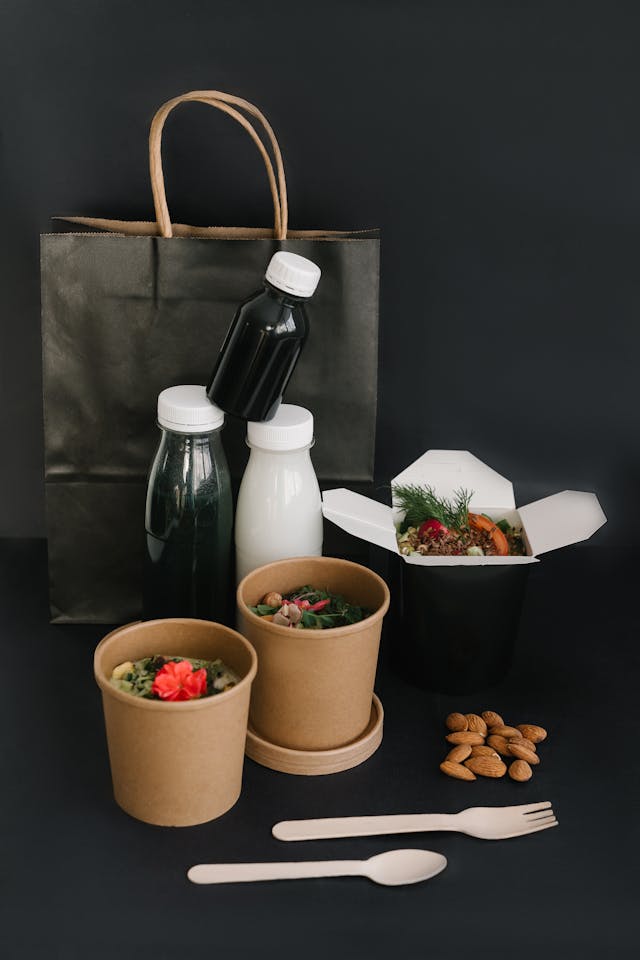
Setting Up a Food Delivery Service From Home
Starting a restaurant delivery service from home is an exciting (and surprisingly achievable) venture. It might seem unexpected setting up what’s essentially a restaurant from your own home kitchen, but people are ordering from food websites more than ever and just love the convenience of having hot and tasty food delivered to them. This makes a great opportunity for you as an entrepreneur to give customers what they want and carve out a niche for yourself within your local area. Here’s how to go about it.
Hygiene Certification and Legal Requirements
First, you need to make sure that your kitchen meets all health and safety standards, and this involves getting yourself a food hygiene certification. You can take a food hygiene course online or in person, which will teach you the essentials of food safety, including proper food handling, storage and cleaning procedures. After completing the course you’ll receive a certificate that demonstrates your understanding of these practices.
You don’t need to have a commercial kitchen, but you will need to make sure certain rules are followed, for example you might need a separate fridge for your business and your personal use. You will need to make sure pets don’t enter the kitchen, and that it’s kept clean and rubbish is taken care of properly. Next, you’ll need to register your home kitchen with your local health department. An inspector will visit your home periodically to check that your kitchen meets the necessary standards.
Deciding on Cuisine
Next you’ll need to decide on a cuisine. You might want to find a niche – maybe something like a pasta delivery shop, purely vegan desserts or a type of cuisine that’s not easily able to get in your area. You might go with slow cooked hot pots and pies, or a traditional ‘greasy spoon’ serving cooked breakfasts- but all day!. Do your research, you don’t want to be competing too heavily with well established local businesses so finding your niche allows you to give your customers something different.
Setting Up Your Kitchen
As well as being clean to pass inspections, your home kitchen needs to be well organised and equipped to handle the volume of orders you plan to receive too. Invest in high quality kitchen equipment like a good oven, stove and refrigeration units as your business expands as this will make life much easier. Make sure you have enough storage space for ingredients and supplies and think about how you’ll manage food preparation. Preparing ingredients in advance can save time and help you handle multiple orders smoothly. It’s also important to label and store food properly to maintain freshness and avoid cross contamination. Your hygiene courses will tell you all about this so make sure you’re clued up to keep your customers safe.
Packaging Your Food
Packaging needs considering just as much as the food itself. It needs to be able to keep the food fresh and intact from your home to your customers. Don’t skimp here, invest in high quality, leak proof containers that are appropriate for the type of food you are serving. Sturdy boxes that are delivered in commercial pizza delivery bags will make sure pizzas arrive hot and fresh. And recyclable plastic containers are good for liquids like curries and stews. Eco-friendly packaging options are also becoming increasingly popular and can appeal to environmentally conscious customers. Make sure to include utensils, napkins and condiments with your orders, the cost of these needs to be factored into your prices.
Selling on Platforms Like Uber Eats and Just Eat
Once your kitchen is certified, the next step is to decide how you’ill sell your food. Online platforms like Uber Eats and Just Eat can help you reach a wide customer base without needing a physical storefront. To get started, visit their websites and sign up as a restaurant partner. You’ll need to provide details about your business, including your menu, prices, and photos of your dishes. These platforms usually charge a commission on each order, so factor that into your pricing. They also offer marketing tools to help promote your business, which can be very helpful when you’re just starting out. Services like Uber Eats and Just Eat often have their own delivery personnel, which can simplify the process for you.
Promoting Your Business
Marketing is key to attracting customers. Start by creating a strong online presence. Use social media platforms like Instagram, Facebook, and Twitter to showcase your dishes and engage with potential customers. High-quality photos and engaging posts can draw attention to your business. You can also offer promotions and discounts to first-time customers to encourage them to try your food. Ask satisfied customers to leave positive reviews online, as good reviews can significantly boost your credibility and attract more orders.
Word of mouth is powerful, so encourage your friends and family to spread the word about your new business. You could also collaborate with local influencers or food bloggers to reach a wider audience.
Keeping Track of Finances
Finally, keep a close eye on your finances. Track your expenses, including ingredients, packaging, marketing, and delivery costs. Make sure you price your food to cover these expenses while still making a profit. Consider using accounting software to help manage your finances and keep everything organised.






